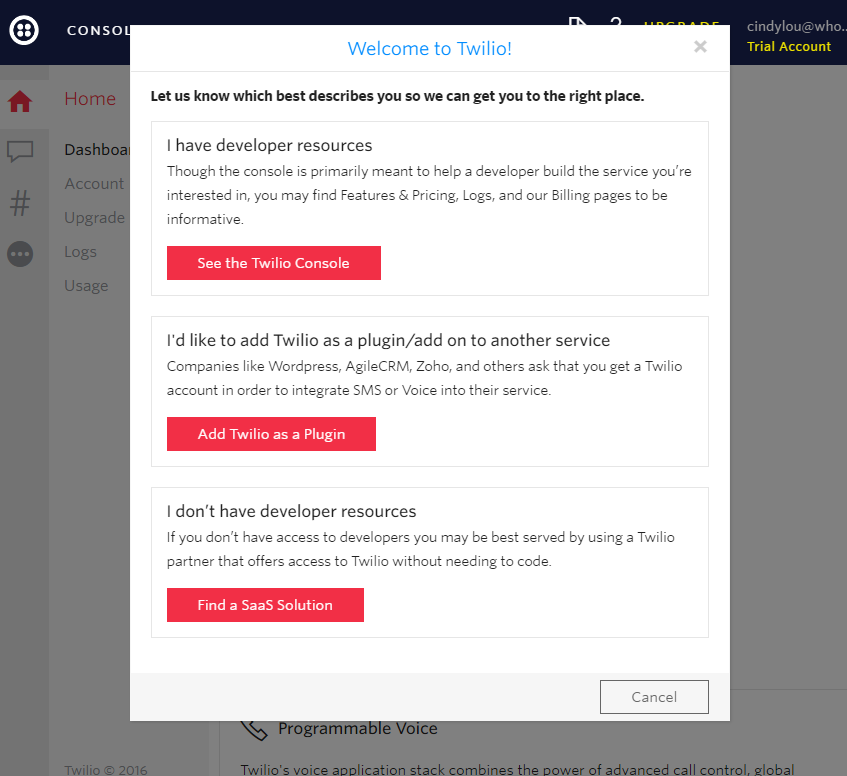How to build a tailored user onboarding experience
This is the second half of our two-part series: How to Take Lead Enrichment Beyond the Funnel. Read the first part here.
Onboarding is usually one-size-fits-all. There's a video or tutorial that greets every new user with the same templated experience that walks them through the product's core functionality. But if your leads don't fall into one bucket, your onboarding process shouldn't either.
Ghosting is all too common: people sign up for your product and too many of them leave. Without a strong onboarding process, you run the risk of investing time and energy into getting leads, only to lose them after conversion.
The case for tailored onboarding experiences is particularly strong for SaaS companies, which may serve multiple audiences, industries, or pricing tiers — or have multiple product offerings. An onboarding experience that accounts for such segmentation can build the foundation for a stronger customer relationship.
Let's go through how to use enriched lead data to segment leads automatically and build customized onboarding sequences.
Use lead data to personalize user onboarding
Leads can come in different shapes and sizes. The key activation event for one group of leads may not be the same for another. Things may start to diverge based on job role, seniority, stage of company. So how do you deal with diverging goals and expectations?
For example:
- Your leads split into two groups because you have a freemium product: self-serve and larger deals where you want to offer a more hands-on experience.
- Your product offers features and functionalities that appeal to several types of job roles or multiple industries.
- Leads generated from a paid ad placement have a different product awareness level from those that came in from a search result.
Leverage insights about your leads, such as differences in attributes, key activation, and product usage contexts to create an onboarding experience that addresses those specific needs.
1. Segment leads to discover their aha moment
Start by analyzing whether you're dealing with different types of leads. The closer in persona, behavior, and goals each member of a cohort is, the more likely they are to share the same aha moment. (Maybe your leads look different but their actions, needs, and paths to success converge. Then the one-size-fits-all approach works!)
For example, let's say our product is a sales and marketing automation platform. By analyzing past sales and roles from enriched data, we know to break out our single bucket of “New Leads” into one of three job categories: marketers, sales, developers.
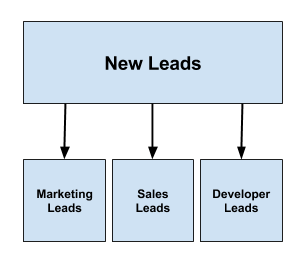
Each lead type gets value from our product in a different way:
- Marketers value performance-reporting and email-marketing functionality.
- Salespeople get more value from our CRM and outreach tools.
- Developers prioritize ease of integration with other sales and marketing products.
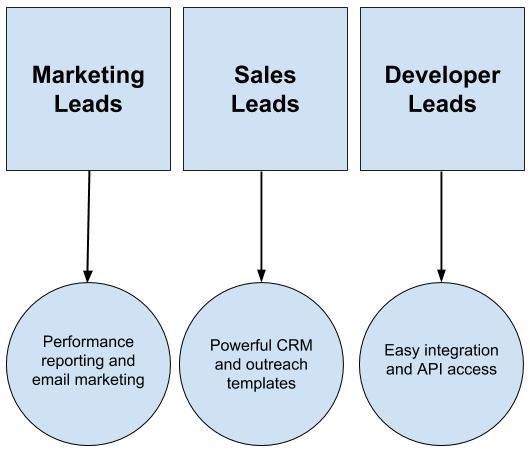
2. Automatically process leads into segments
In order to send people on different onboarding paths, you'll have to know what lead bucket they fall into. While you can have users self-select, the most efficient method is to automate it and lower the risk of drop-off.
Use APIs to enrich new signups with more data to help qualify and categorize them. That way, once you get an email address on signup, you can unlock useful insights such as:
- Company
- Industry
- Role
- Seniority
- Technology used
... and use those data points along the customer journey — in product onboarding, interaction with sales and support, emails and in-app messaging, and more.
Once you've got automatic enrichment set up, you can send leads right to the onboarding path most appropriate for their segment.
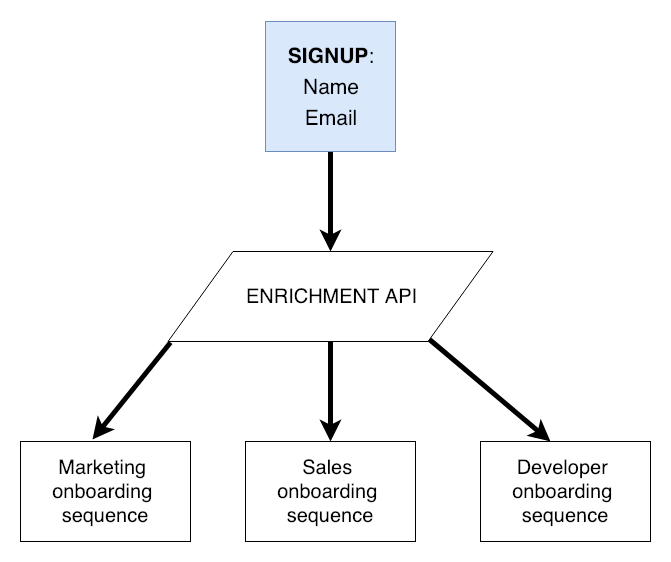
3. Diagnose existing drop-off points
If you've set up event tracking internally or with a tool like Amplitude, you can review steps in an existing onboarding process and plot the drop-offs from action to action. By doing this for each segment, you develop a clearer picture of which parts of the experience is serving which leads well.
Let's look at the onboarding process for our marketing cohort for our example product. Here, the drop-off from action to action is close to 10%, and 70% of leads successfully launch their first campaign.
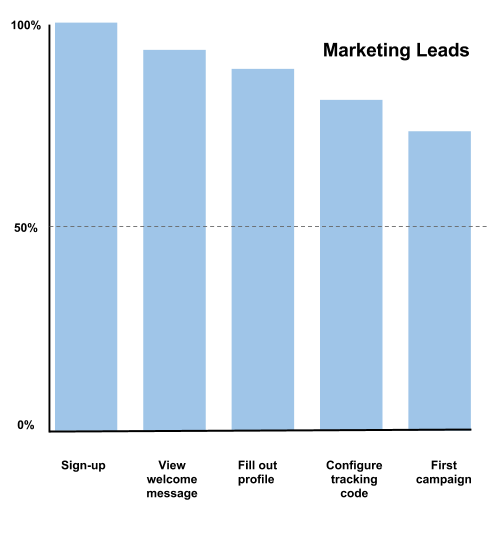
Contrast that with the same onboarding process, but experienced by the leads with sales roles. In this case, there's a 20% drop-off after viewing the welcome message, and a huge 40% drop-off when it comes to installing the tracking code.
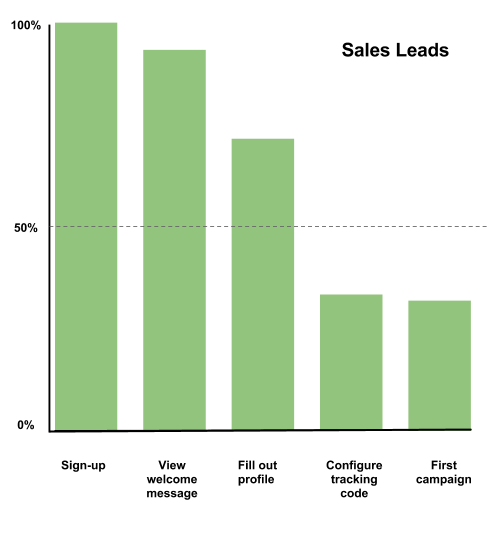
Almost everyone who successfully configures the tracking code goes on to launch their first campaign, which is great. But we've identified a clear sticking point in our onboarding process for our salespeople segment. Only 30% of them are making it to the activation point.
It might be that our current welcome message focuses too much on the marketing functionality of our product and leaves salespeople cold — or configuring the tracking code is just too technical for this crowd.
Given this knowledge, we can turn to onboarding tools like Appcues to quickly customize the messaging and design of an onboarding flow according to the segment. Here we could try revamping our welcome message to appeal more broadly and add a call to action for sales leads. They could see a quick link to send instructions on configuring the tracking code to a developer, similar to this example from LiveChat.
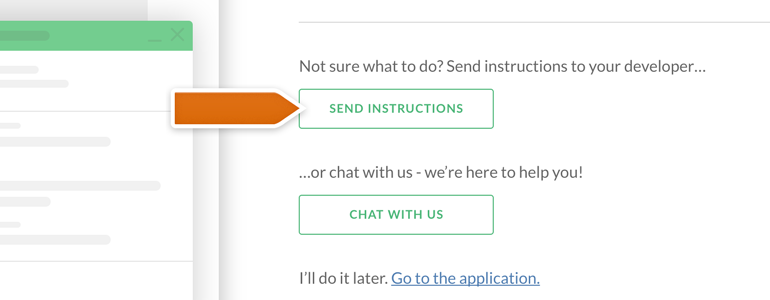
4. Build tailored onboarding sequences
Once you've segmented your leads and reviewed your current onboarding, map out each group's aha moment by calculating their key activation event as well as the steps required to reach it. The more lead insight you uncover, the easier it is to find each user's "minimum path to awesome": the shortest possible route from first app interaction to successful activation.
Here's what that looks like for our example's three lead cohorts:
- Marketers need to install a tracking code before running their first analytics report.
- Salespeople need to integrate their current CRM to enable them to send their first outreach email.
- Developers need to view the API documentation to set up their first custom integration.
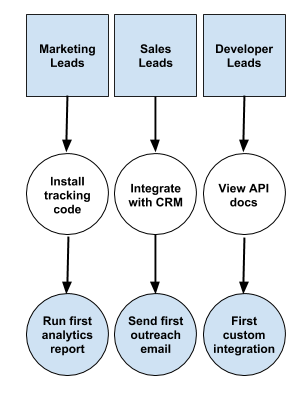
These minimum paths to awesome for our three segments of new users create the blueprint for personalized onboarding sequences, a clear path from first interaction to each lead's desired outcome.
Using that information, we can build out onboarding paths, tailoring elements such as a welcome screen, app walk-through, first user experience.
Post sign-up welcome screen
The welcome screen is the first thing a new user sees upon signup. The more relevant we can make it for each lead, the more likely they are to continue engaging with the app and reach activation.
A few years ago, the blogging platform Ghost had two distinct lead types: nontechnical users looking for a plug-and-play blogging platform and people with more technical expertise looking for a powerful, open-source, easy-to-customize solution.
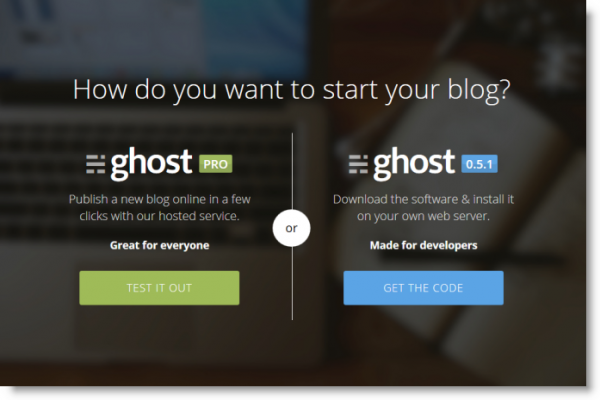
The page offered two distinct pitches and two distinct calls to action: Test It Out vs. Get the Code. This fork in the road was a choice that set a new user up for success better than a blanket "Get started" approach. Each user would fall into either the technical or the nontechnical camp and get a more relevant path towards activation.
Onboarding walk-through
Customizing even a few small details in a walk-through, such as an in-app tutorial, can make a big difference in how new users connect with your product. Here are two quick examples from Twilio and Asana.
Though targeted primarily at savvy developers, API communications platform Twilio recognizes that new users have varying degrees of technical expertise. Instead of forcing leads to engage with a walk-through that might be too complex or just plain irrelevant, they've segmented it according to three common situations.
Developers get a link straight to the console. New users who came in for an integration head straight to adding Twilio as a plugin. Non-technical users are gently directly toward finding Twilio partners to help them get use out of the product.
The project management tool, Asana has new users self-select what type of team they work on:

Then they use the selection to seed their onboarding walkthrough with relevant project templates:

First User Experience
As part of your product walk-through or in a first user experience, guide people to value and find their aha moment by highlighting their next best step.
For example:
- If your lead completed a marketing-focused walk-through, direct them to your reporting dashboard.
- If they came from a sales flow, open up an email outreach template.
After their walk-through, Dropbox shows a clear next step: dragging your first file into the Dropbox folder.
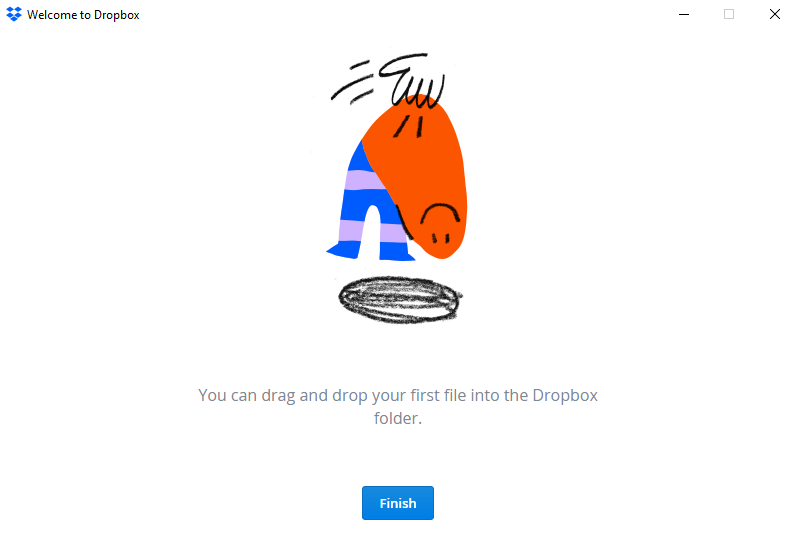
Instead of leaving it to chance, use lead insight to trigger the right action.
From Lead Insight to Long-Term Customer
When there's an overbalance of focus on customer acquisition, the harder it is to build systems and design your product experience to help new users actually benefit.
Instead of funneling leads into a one-size-fits-all onboarding process, tools like Clearbit and Appcues make it easier than ever to create personalized, purposeful onboarding.
The more you learn about new users, the quicker that aha moment comes — and the easier it becomes to retain a happy, long-term customer.
Did you miss part 1 about how to find your key activation event? Read it here.

